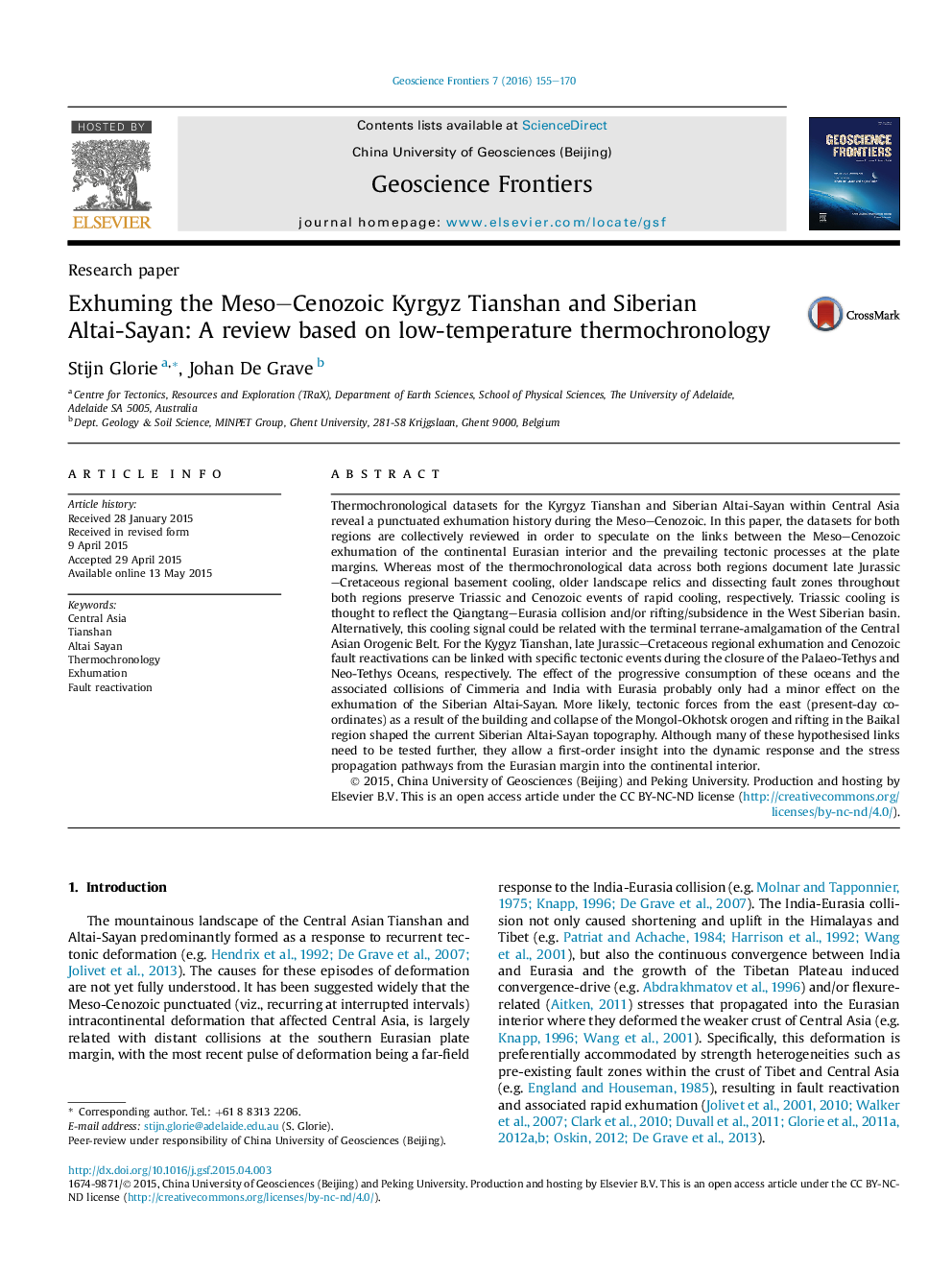| Article ID | Journal | Published Year | Pages | File Type |
|---|---|---|---|---|
| 4681536 | Geoscience Frontiers | 2016 | 16 Pages |
•Thermochronology reveals a punctuated Meso–Cenozoic exhumation history of Central Asia.•Kyrgyz Tianshan reactivations are linked with closure Palaeo- and Neo-Tethys Ocean.•Siberian Altai-Sayan reactivations are linked with closure Mongol-Okhostk Ocean.
Thermochronological datasets for the Kyrgyz Tianshan and Siberian Altai-Sayan within Central Asia reveal a punctuated exhumation history during the Meso–Cenozoic. In this paper, the datasets for both regions are collectively reviewed in order to speculate on the links between the Meso–Cenozoic exhumation of the continental Eurasian interior and the prevailing tectonic processes at the plate margins. Whereas most of the thermochronological data across both regions document late Jurassic–Cretaceous regional basement cooling, older landscape relics and dissecting fault zones throughout both regions preserve Triassic and Cenozoic events of rapid cooling, respectively. Triassic cooling is thought to reflect the Qiangtang–Eurasia collision and/or rifting/subsidence in the West Siberian basin. Alternatively, this cooling signal could be related with the terminal terrane-amalgamation of the Central Asian Orogenic Belt. For the Kygyz Tianshan, late Jurassic–Cretaceous regional exhumation and Cenozoic fault reactivations can be linked with specific tectonic events during the closure of the Palaeo-Tethys and Neo-Tethys Oceans, respectively. The effect of the progressive consumption of these oceans and the associated collisions of Cimmeria and India with Eurasia probably only had a minor effect on the exhumation of the Siberian Altai-Sayan. More likely, tectonic forces from the east (present-day coordinates) as a result of the building and collapse of the Mongol-Okhotsk orogen and rifting in the Baikal region shaped the current Siberian Altai-Sayan topography. Although many of these hypothesised links need to be tested further, they allow a first-order insight into the dynamic response and the stress propagation pathways from the Eurasian margin into the continental interior.
Graphical abstractFigure optionsDownload full-size imageDownload as PowerPoint slide
